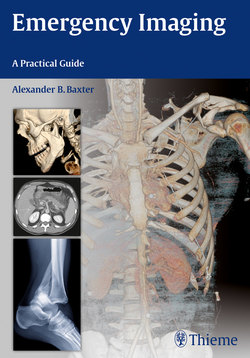Читать книгу Emergency Imaging - Alexander B. Baxter - Страница 67
На сайте Литреса книга снята с продажи.
Оглавление53
2Brain
incidentally. Symptomatic patients present with seizures or, if the malformation is lo-cated in an eloquent portion of the brain, focal neurologic deficits related to hemor-rhage or thrombosis.
CT findings are subtle and nonspecific. When visible, cavernous malformations usually appear as a vague, hyperdense, nonenhancing, subcentimeter parenchy-mal nodule and are sometimes mistaken for subacute traumatic hemorrhage. MRI is diagnostic and reveals a characteristic mulberry-like collection of blood products in dierent stages of evolution, often with a rim of surrounding low-signal hemosid-erin. Gradient echo imaging is particularly sensitive to blood products and should be obtained when a cavernous malformation is suspected.
Surgical treatment (excision or stereo-tactic radiosurgery) is reserved for patients with recurrent hemorrhage, intractable epilepsy, or progressive neurologic dete-rioration (Fig. 2.21).
◆Cavernous Malformation
Cerebral cavernous malformations (alsoknown as cavernous hemangiomas) arecompact vascular malformations consistingof thin-walled capillaries without interven-ing neuronal tissue. On gross examination,they are circumscribed, red, lobulated mass-es from less than a millimeter to several cen-timeters in diameter. Most are supratentorialand are found in the frontal and temporallobes. They are usually solitary, althoughsome patients can have multiple lesions andfamilies have been identified in which sev-eral members have multiple lesions.
Occasionally, cavernous malformations are associated with developmental venous anomalies. These are small clusters of ve-nules that drain a small segment of nor-mal brain via a single larger anomalous vein that leads to either a dural sinus or an ependymal vein. Usually seen only on postgadolinium MRI, venous angiomas re-semble an umbrella or palm tree.
Most patients are asymptomatic, and most cavernous malformations are found
Fig. 2.21a–fa–e Cavernous malformation with associated developmental venous anomaly. (a) NCCT. Vague, 1-cm rounded right frontal hyperdense lesion; no associated edema. (b) T2WI. “Mulberry-like,” mixed-signal-intensity lesion with surrounding low-signal rim on gradient echo imaging. No associated edema or other parenchymal abnormality. (c) GRE. Low signal intensity corresponds to hemosiderin within the malforma-tion. (d,e) T1-weighted postgadolinium images show an associated developmental venous anomaly: a small umbrella-like cluster of venules that drain a small segment of frontal lobe parenchyma adjacent to the cavernous malformation. A single draining vein courses along the ventricle and septum pellucidum to join the internal cerebral vein.
f Multiple cavernous malformations. Three large occulent parenchymal calcications, up to 4 cm in di-ameter, located in the right frontal lobe and left insula. Associated right frontal cortical encephalomalacia.
